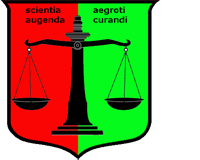Professor Dr. med. Christian ScharfetterDept. of Psychiatry, Psychotherapy & PsychosomaticsPsychiatric Hospital, University of Zurich |

|


|
Utility of Current Diagnostic EntitiesThe utility of current diagnostic entities for genetic studies seems limited, since psychiatric diagnoses incompletely cover the patients’ prodromal phase, age-of-onset, severity of illness, long-term course, and impairment. In particular, psychiatric diagnoses do not offer much information about a patient’s response to treatment and prognosis. Quantitative, syndrome-oriented approaches to psychopathology extend the DSM-IV or ICD-10 phenotype definitions by replacing the dichotomy of the diagnostic schema by dimensional quantities. These quantities allow one to assess intra-familial patterns of psychopathology that do not reach diagnostic significance. Our syndrome-oriented approach to psychopathology includes 16 syndromes and leads to a representation of psychopathology patterns via 16-dimensional quantitative "syndrome vectors" that are extracted from the DIGS and SSCL16 rating instruments. Quantitative Syndrome PatternsIn a prospective family study of 269 index cases suffering from functional psychoses, 350 affected first- and second-degree relatives, a 20-year follow-up of the index cases, and 105 offspring of the index cases, we applied a multivariate syndrome-oriented approach to psychopathology in order to derive a quantitative measure of the severity of illness and to partition the population into "natural" subgroups. Our main interest was focused on: (1) the question of increasing severity of psychoses across generations (anticipation), (2) the question of differences in the severity of psychoses depending on whether the illness has been transmitted by the maternal or paternal side (genomic imprinting), and (3) the question of age-of-onset shifts toward earlier onset of psychoses in successive birth cohorts (secular trends). Structural analyses revealed clearly distinguishable subgroups of patients characterized by differences in the familial aggregation of syndromes and in the longterm outcome [Stassen et al. 1988; Scharfetter and Stassen 1995; Scharfetter et al. 1999, 2002]. Familial Aggregation Rather than SegregationWe carried out multivariate cluster analysis based on the 16-dimensional, quantitative syndromes derived from the 269 index cases with a diagnosis of functional psychosis, on the one hand, and from the 350 first-degree relatives who exhibited psychopathologic features in our quantitative SSCL-16 syndrome scores, on the other. Our search for "natural" groupings revealed three "core" clusters which were similarly present in the two populations under investigation. There was Striking similarity between mean quantitative syndrome patterns derived by averaging across index cases and mean quantitative syndrome patterns derived by averaging across "affected" first-degree relatives. Despite this striking similarity on the group level, within-family comparisons of syndrome patterns demonstrate that the familial aggregation of syndromes does not occur in a homotypic way, i.e., family data do not provide evidence for genetic segregation. This finding is specifically supported by twin samples ascertained through co-twins suffering from schizophrenic disorders, where highly significant deviations from the mz:dz ratio of 2 indicate the existence of strong non-linearities in the genetic predisposition to functional psychoses. References
Stassen HH, Begleiter H, Porjesz B, Rice J, Scharfetter C, Reich T: Structural decomposition of
genetic diversity in families with alcohol dependence. Genetic Analysis Workshop 11: Analysis
of genetic and environmental factors in common diseases. Genetic Epidemiology 1999; 17:
325-330
Stassen HH and Scharfetter C: Integration of genetic maps by polynomial transformations.
Am J Med Genetics B 2000; 96: 108-113
Stassen HH, Bridler R, Hägele S, Hergersberg M, Mehmann B, Schinzel A, Weisbrod M, Scharfetter C:
Schizophrenia and smoking: evidence for a common neurobiological basis?
Am J Med Genetics B 2000; 96: 173-177
Hoffmann K, Stassen HH, Reis A: Genkartierung in Isolatpopulationen. Medizinische Genetik 2000;
12,4: 428-437
Stassen HH, Scharfetter C: Oligogenic approaches to the predisposition of asthma in ethnically
diverse populations. Genetic Analysis Workshop 12: Analysis of genetic and environmental factors
in common diseases. Genetic Epidemiology 2001; 21(1): 284-289
Stassen HH, Hoffmann K, Scharfetter C: Similarity by state/descent and genetic vector spaces:
Analysis of a longitudinal family study. Genetic Analysis Workshop 13: Analysis of longitudinal
family data for complex diseases and related risk factors. BMC Genet 2003; 4, S59: 1-6
Stassen HH, Bridler R, Hell D, Weisbrod M, Scharfetter C: Ethnicity-independent genetic basis
of functional psychoses. A Genotype-to-phenotype approach. Am J Med Genetics B 2004; 124:
101-112
Berger M, Stassen HH, Köhler K, Krane V, Mönks D, Wanner C, Hoffmann K, Hoffmann MM, Zimmer M,
Bickeböller H, Lindner TH: Hidden population substructures in an apparently homogeneous
population bias association studies. Eur J Hum Genetics 2006; 14: 236-244
Stassen HH, Szegedi A, Scharfetter C: Modeling Activation of Inflammatory Response System.
A Molecular-Genetic Neural Network Analysis. BMC Proceedings 2007, 1 (Suppl 1): S61, 1-6
Stassen HH, Hoffmann K, Scharfetter C: The Difficulties of Reproducing Conventionally Derived
Results through 500k-Chip Technology. BMC Genet Proc. 2009; 3 Suppl 7: S66
|
|

Within-pair concordances in monozygotic (red) and dizygotic (green) twins for the quantitative traits "finger ridge count", "body height", "brain-wave patterns", "body weight", and "schizophrenic disorders". Distributions are normal with mean values ranging between 0.99 (finger ridge count) and 0.55 (schizophrenic disorders). Mean values and variances are correlated: the higher the mean value the smaller the variance [Lykken & Stassen: data of 1,300 dz and 1,434 mz twin pairs].
All the above traits show the mz:dz ratio of 2:1 for additive traits,
except for schizophrenic disorders.
|
|
| [ Mail to Webmaster ] k454910@ifrg.ch |